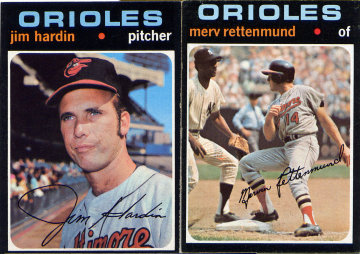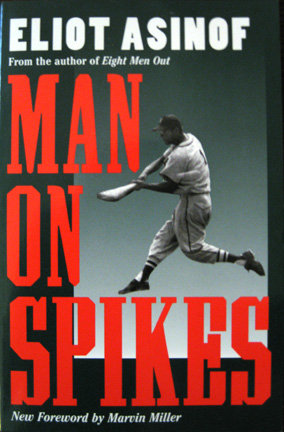“Sometimes you only get to win one championship.” –Leonard Gardner
Did you ever rent a movie and then return it without watching it?

I’ve rented John Huston’s Fat City at least twice in my life but never watched it. I can’t explain why. Chalk it up to my mood at the time. After all, Huston is one of my favorite directors and Jeff Bridges one of my favorite actors.
Fat City is based on Leonard Gardner’s novel of the same name. The book is less than 200 pages long, and the story is almost unbearably grim. It is about boxing and drinking in Stockton, California. It is about losers losing. And although the prose is lean and clear, it is also dense–you can almost feel how much effort went into making it so direct and spare.
It was a tough book for me to get through, even though it wasn’t long. I read it because I thought it would be good for me not because I enjoyed it. I admired the artistry–the writing was superb, but I found the story bleak and depressing. When I finished it, I thought, Now, there is a world I don’t need to visit again. No wonder I never watched the movie.

I felt compelled to read the book because Huston’s movie started a two-week run at the Film Forum last night. George Kimball and Pete Hamill introduced the movie and then stuck around to answer questions when it was over. Hamill said that Gardner’s novel is one of the three best boxing novels ever written, along with The Professional by W.C. Heinz, and The Harder they Fall by Budd Schulberg. Kimball who is a walking encyclopedia of boxing knowledge talked about how Huston cast boxers and non-actors in the movie, how he insisted that it be shot in Stockton to preserve the book’s authenticity, how the producer Ray Stark wanted to fire the DP, the great Conrad Hall, because the scenes inside the bars were so dark.
Kimball also tried to explain the biggest question about Gardner (one that Gardner is probably asked daily)–why was Fat City the only book he ever wrote? Gardner continued to write short stories and journalism–I remember reading a piece he did for Inside Sports on the first Leonard-Duran fight–and eventually went to Hollywood to write for television. David Milch taught Fat City when he was at Yale and got Gardner work on NYPD Blue, which proves that Milch isn’t all bad (although he famously ripped-off Pete Dexter’s novel Deadwood for his TV series).
Kimball didn’t know the exact reason why Gardner has never written another book. He said Gardner’s never offered a reason and he’s never pressed him for one. Kimball’s guess is that Gardner wrote such a perfectly realized book in Fat City that he figured could never reach that height again. So why bother trying? Kimball said that Fat City was 400 pages long and Gardner kept honing it, pairing it down, like a master chef making a reduction.
Whatever the reason, it is easy to see why Huston was attracted to the story. Hamill said that Huston spent his life making one movie for the studio and then one for himself. And this was one of his personal movies. He has great affection for the characters and the place and while he captures the unhappiness of Gardner’s book, I think the movie is has far more humor. There was some funny banter in the book but it didn’t come across as amusing to me. But the moment we see Nicholas Colasanto (better known to my generation as Coach from Cheers), the sound of his voice is warming, and cuts into the despair. So does the soundtrack.

Huston’s directorial style is also an ideal fit for Gardner’s prose. I remember once reading an article about Huston in American Film when he was making his final film, The Dead (another personal project). His son Tony was surprised at how skilled his father’s camera technique was. And the old man said, “It’s what I do best, yet no critic has ever remarked on it. That’s exactly as it should be. If they noticed it, it wouldn’t be any good.”
In Huston’s movies–The Maltese Falcon, The Treasure of the Sierra Madre, Prizzi’s Honor–you don’t notice the style, you follow the story. Gardner, who wrote the screenplay with Huston, was blessed to have this man in his corner. The boxing scenes are strong. You feel close to the action, but nothing is forced or stylistic–it’s not like the Rocky movies or Raging Bull. In fact, you can see the ropes in the frame often, putting us just outside of the ring. The boxers sometimes look clunky but since they aren’t supposed to be great fighters, it works. And in Keach’s big fight scene you can feel the fighter’s exhaustion, their bodies getting heavy, by the second round.

Stacey Keach and Jeff Bridges are terrific (so when is Bridges not terrific?). There is a dignity to the characters, no matter how laid-out they are. There is a tremendous shot, a long take, when Keach and his trainers and their wives leave the arena after a fight, followed by a broken-down Mexican fighter that illustrates this beautifully.
Keach wears a silver braclet in the movie that was exactly like the kind my father wore during that period, when I was a young kid. But my old man was a middle-class drunk, so the comparisons end there. However, the bar scenes, the life of drunks, rang true and reminded me of my father’s alcoholism. There is a lot of drinking during the day, and Kimball remarked on the blinding light that greets you once you stumble out into the daylight. Like when you come out of a movie theater in the middle of the day–but more woozy and disorienting.
It is that kind of touch that makes Huston’s movie effective. Nothing much happens in the story. But it feels authentic, taking the essence of Gardner’s book and making it into a story for the screen.















